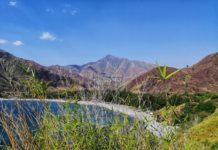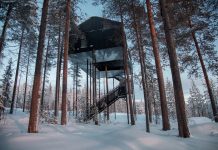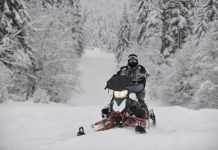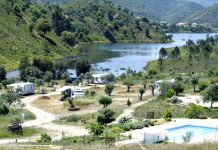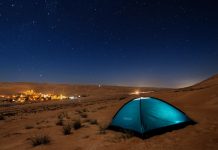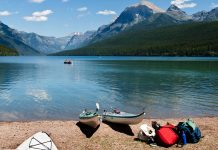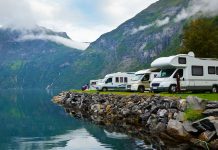If you want to experience a true Alaskan adventure you should be able to see and do as much as your heart desires with a visit to Denali National Park and Preserve, which is the home to North America’s highest mountain, Mount McKinley. The park, which was established in 1917, is gigantic at a size of just over six million acres or 9,492 square miles.
It’s also one of the most popular in the country and regularly attracts over a million visitors a year.
 (photo by blmiers2)
(photo by blmiers2)
In the native Athabaskan language, the word Denali translates into ‘the high one,’ and refers to Mount McKinley itself, which was named in honor of former US President William McKinley. The park was originally named the Mount McKinley National Park, but was later changed to the Denali National Park and Preserve in 1980. Mount McKinley was also changed back to the original Denali.
The park has an interesting mixture of forest in the lower sections and tundra in the middle elevations. At the highest elevations of the park you’ll find an assortment of snow, rock, and glaciers. The landscapes make it an ideal location for backpacking, mountaineering, and viewing wildlife. During the winters, it’s a popular spot for snowmobiling, cross-country skiing, and dog-sledding.
There’s a wide variety of wildlife to view in Denali Park and preserve, such as Alaskan birds, black bears, grizzly bears, caribou, dall sheep, moose, gray wolf, hoary marmots, beavers, arctic ground squirrels, pikas, snowshoe hares, martens, foxes, wolverines, and lynx.
Some of the birds that fly around the park include migratory species which live there between late spring and the summer. You’ll find Arctic Warblers, waxwings, wheaters, pine grosbeaks, Ptarmigan, tundra swans, owls, gyrfalcons, hawks, and golden eagles.
Fishing enthusiasts will find 10 different species of fish in the lakes, streams, rivers, and ponds. These include salmon, arctic grayling, and trout. However, the fish are often on the small size because a lot of the waterways in the park are fed by the huge glaciers and the cold water temperatures and glacial silt actually slow down the fish’s metabolism.
The park tries to keep humans from interacting with the wild animals as much as possible and visitors aren’t allowed to feed them. This is because it might disrupt their feeding habits. It’s a good idea to view the animals from a safe distance, especially the bears. If any areas of the park are considered to be too dangerous for visitors they’re closed or restricted and reopened when considered safe.
As well as the animals, you’ll also be amazed at the plant life as there are close to 500 different types of flowering plants in the park. These include fireweed, goldenrod, bluebell, gentian, and lupine.
The winters are pretty long in Alaska and the summers in the park can be damp and cool, but the temperatures often reach into the 70s. Any time of the year is recommended for a visit to the park and you can take several narrated tours when there. The best time to get a glimpse of the mountain is in the winter.
The park itself is larger than Massachusetts, which will give you an idea of just how big this amazing wilderness area is. It would take months to explore it all. One of the best ways to see as much as you can is to camp out in one or more of the park’s six campgrounds. The grounds vary in size and you’re allowed to camp in the park for 14 days each year. Some of the grounds can accommodate RV’s (recreational vehicles) that are up to 40 feet long. Backcountry camping can also be enjoyed in the park.

